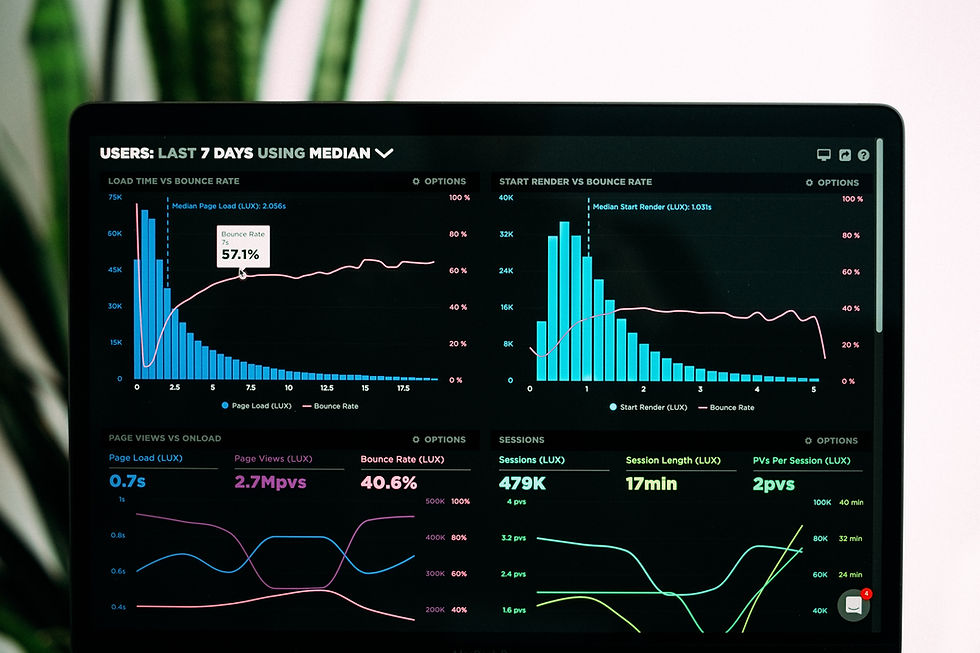Ever feel like you’re on a hamster wheel of more, more, more when it comes to FP&A?
It’s because you are.
Every step forward you make reveals another 3 steps forward you could take.
It’s one of the reasons why good FP&A teams feel constantly understaffed - there is technically an infinite amount of additional work to improve your forecast.
And with today’s technology, it’s possible to achieve more sophisticated levels of financial planning previously not possible.
Every FP&A team is on this journey somewhere…
Let’s talk about the 4 phases:
Phase 1: Monthly financials only
Technology needed: Quickbooks and maybe Excel (or Sheets)
Early in the life of any company, there are a few scrappy people going an inch deep and a mile wide.

Financial planning and forecasting is no exception.
This phase is marked by a business leader (maybe a CFO or Accountant) grabbing the monthly financial statements, looking at the past history, then making a trend pick of the future.
It’s the same basic analysis you would do on a publicly traded company:
Revenue increased 20% this year, I think it’ll increase another 20%
Gross margin % is 55% this month, I think it’ll deteriorate to 50%
Operating expenses are $1M this quarter, I think they’ll jump to $1.2M
Very basic analysis.
Very basic forecasting and planning.
And there is absolutely nothing wrong with this.
But it does leave a lot to be desired when it comes to explaining what happened, why it happened, and what will happen next.
It’s a shame that some finance leaders never grow out of this phase even when their company grows…
Phase 2: Monthly financials + operationals
Technology needed: Quickbooks + Excel + company data
One of my favorite words that is completely unrecognizable by spell checkers: operationals
Since it’s not a real word, let me define it…
Operationals are the business drivers that lead to financial outcomes. Many are direct drivers of the financials (e.g. churned ARR leads to revenue) while others are indirect drivers of the financials (e.g. a drop in customer software usage might lead to churned ARR). Operationals are KPIs defined by the business, but often leveraged by finance.
Me
And operationals are FP&A’s best friend.
They are the keys to unlocking a better and more connected financial forecast.
They also allow us to diagnose a forecast miss and attribute cause.
Here’s a quick example:
When customer utilization rates of the software drop below 50%, we often see that customer churn within 90 days.
We projected 6 customers to churn in less than 90 days based on the current utilization rates of those customers.
Over those 90 days we only had 4 customers churn - 3 from the original list and 1 that never showed a drop in utilization.
Therefore, customer churn was a favorable impact on revenue against our forecast expectations.
You can see how much better that explanation is than ‘revenue was higher than expected this month’.
Phase 3: Integrated planning & forecasting
Technology needed: FP&A tool or robust Excel setup (PowerQuery, etc.)
This is where the big bucks are made.

What I mean by that is every massive FP&A tool or business planning software out there is selling you this step.
It’s not much different from the last step - no new data is present…
But the power in this step is often that you are merging the financial and operational data at the transaction level, not the summarized level.
Let me explain:
In the last step, we are literally logging into 2 different systems to pull data…
Salesforce (for example) for the customer utilization and churn metrics, Quickbooks (for example) for the revenue numbers
Then in our excel model or FP&A tool, we’re matching the monthly result of those up at an aggregated level (the monthly result of each)
In an integrated planning and forecasting world, the merging of data is done at the lowest level possible (transaction, customer, vendor, department, employee) so that a change in your driver forecast will flow all the way through your financial forecast.
And while the output of this step and the last step should be identical, leveraging technology to do all the math behind the scenes means you don’t have an analyst tinkering with an Excel model trying to get the change in customer utilization to flow all the way through every P&L account.
These tools/tech are massively valuable for mature organizations, but may actually present problems for smaller companies.
Standardizing your forecast too early may be a waste of resources especially if your product/market fit is not yet solidified and you find your forecast drivers constantly changing.
Phase 4: Machine learning and real-time insights
Technology needed: Top-tier business planning tools or FP&A tools plus internal analytics team with lots of other analytical tools and capabilities
Here’s where it gets really interesting…

Instead of relying on analysts to send reports, surface insights, update forecasts… you can leverage the technology to do all of that.
But this step only works if you have an integrated planning and forecasting system (phase 3).
Once all your data is in a single analytical ecosystem, you can then:
Layer on machine learning to uncover patterns in the data that are impossible for a person to see (billions of rows of transactional data across thousands of variables)
Leverage machine learning to do a multivariate financial forecast based on hundreds/thousands of data dimensions
Uncover patterns in the data that don’t fit the trend (outside of a standard deviation or normal expectation)
Push real-time analytics to front line employees or leaders as they manage the actual work being done
Implement AI chat bots that allow leaders to interact with your data directly
As of today, this is where perfection is.
Very few are here, comfortable, and reaping the rewards of the journey… mostly because it takes years of groundwork to get there.
You can’t skip levels, and many finance leaders don’t have a vision for this.
So investments don’t get made and finance teams get stuck somewhere between phases 2 and 3.
In summary:
Technology’s impact on your financial planning and forecasting journey is clear, linear, but difficult to achieve.
Spend time understanding what step of the journey you are on and what it’ll take to jump to the next level.
Then price out your tech costs of doing that and build a vision bold enough to make it happen.
If you are looking to improve your FP&A operations, start by taking our FP&A Assessment to get your FP&A Score and tactics to improve it.